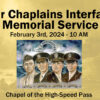Beth Reese Cravey | Florida Times-Union | June 2, 2023
A newly restored F/A 18 Hornet fighter jet bearing the name of the late Capt. Scott “Spike” Speicher now stands guard in front of the former Cecil Field Navy base’s Chapel of the High-Speed Pass.
The jet is the kind last flown by Speicher, the Cecil-based pilot shot down on the first day of Operation Desert Storm on Jan. 17, 1991, whose remains were finally returned to Jacksonville in 2009. It is one of two military planes restored on display — two more will be added later — at the $85 million National POW/MIA Memorial & Museum being developed at Cecil Commerce Center on Jacksonville’s Westside.
Military veterans who work at the nearby Boeing plant spent eight months, hundreds of hours of their own time, removing corrosion, replacing lost parts, repainting and generally rehabilitating the F/A 18. They used mostly donated supplies and worked in hangar space provided by Boeing, according to museum spokesman Buddy Harris, a retired Navy commander and friend of Speicher.
Operation Desert Storm: Daughter of Scott Speicher helps wounded veterans 25 years after father’s death
Slideshow: Remembering Scott Speicher’s story 25 years later
Scott Speicher: A hero’s final day
Daniel “Dano” Mastrolia, a 20-year Navy veteran who spent most of his service at Cecil, led the Boeing crew. Mastrolia’s leadership, Harris said, was key to Boeing’s involvement and getting the project completed.
“I knew the POW/MIA memorial here in Jacksonville needed help. I stepped in, got a group of volunteers from Boeing and we executed the plan,” Mastrolia said. The process had numerous “high points,” he said, but “seeing it here on display at the chapel is the most rewarding of all.”
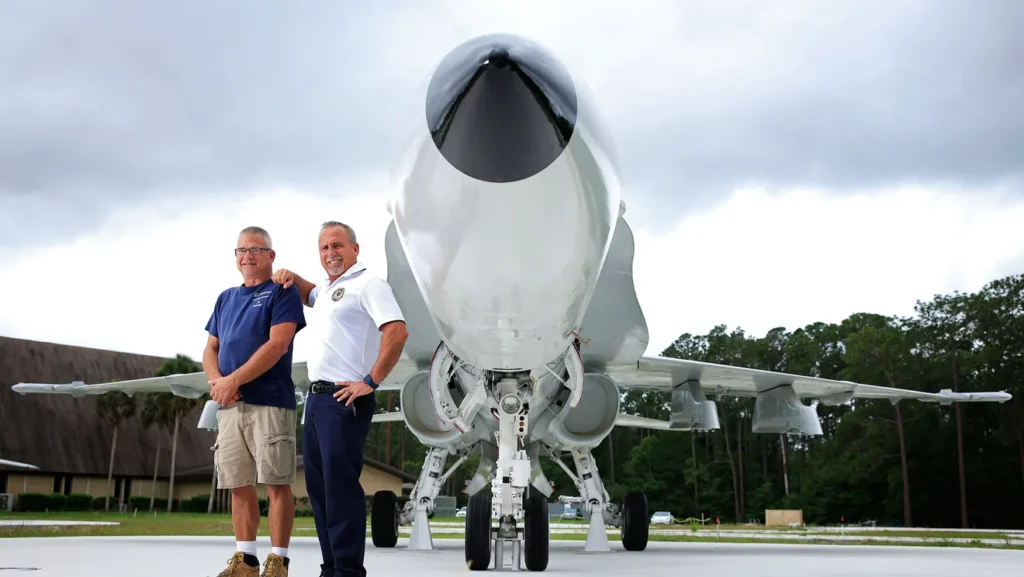
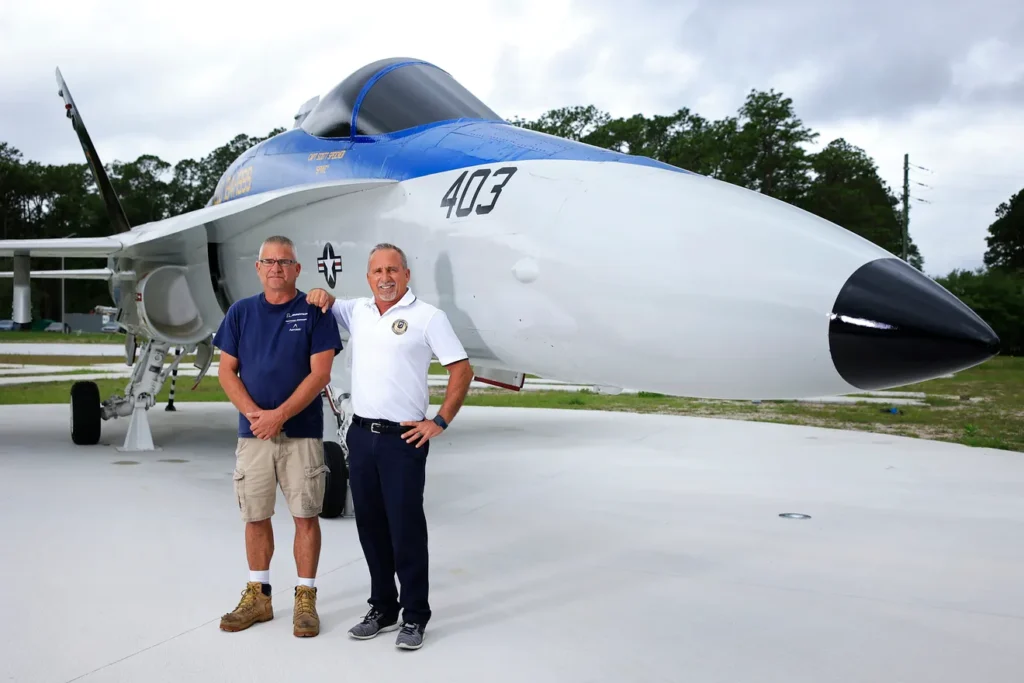
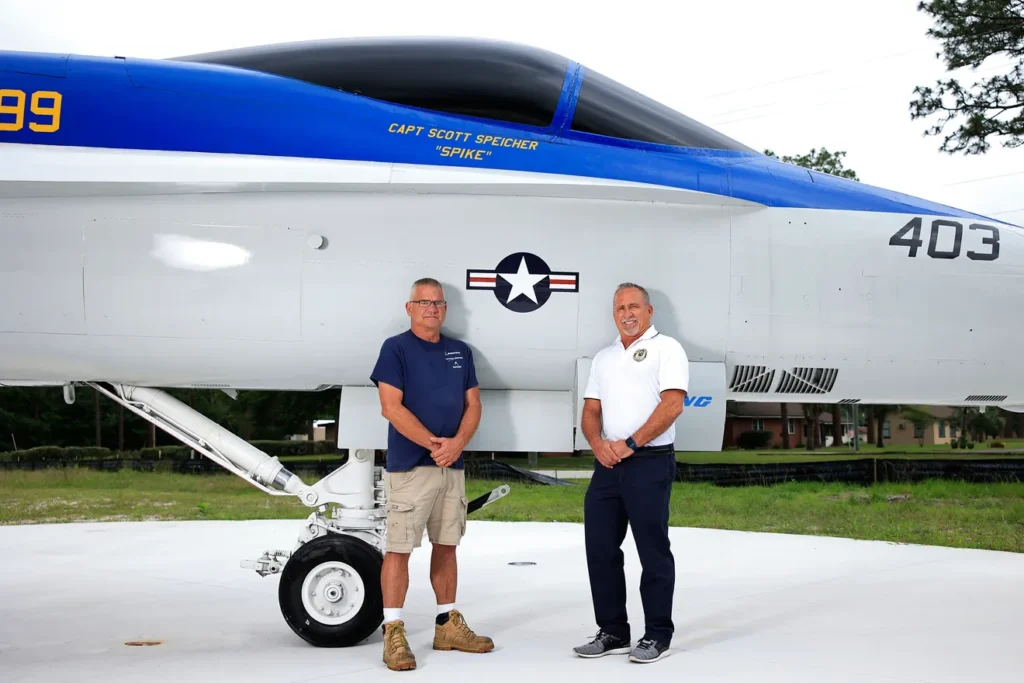
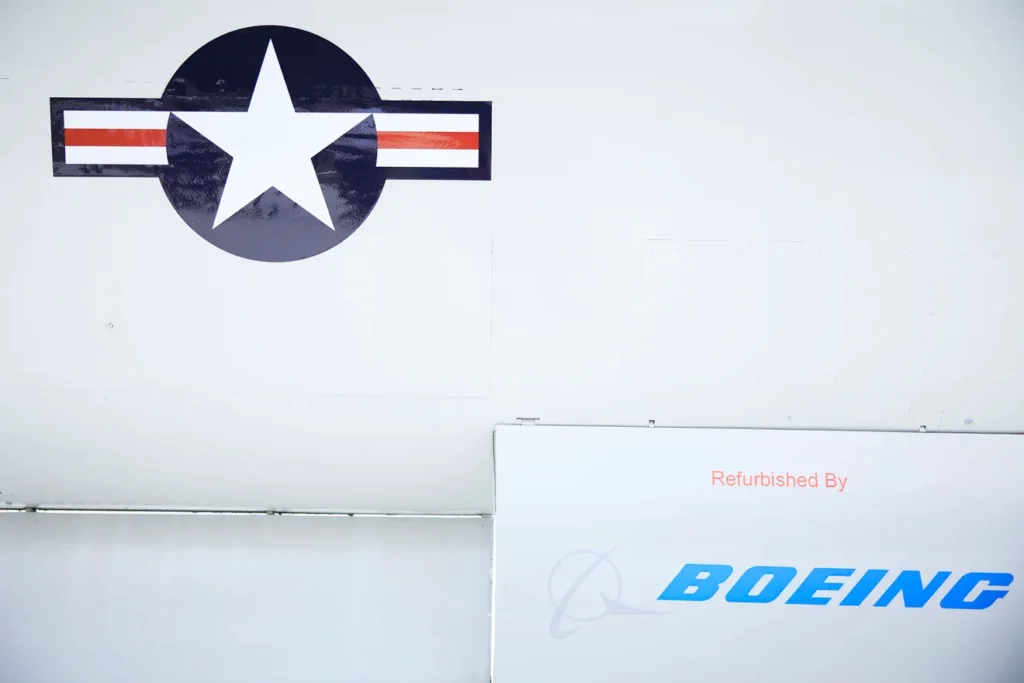
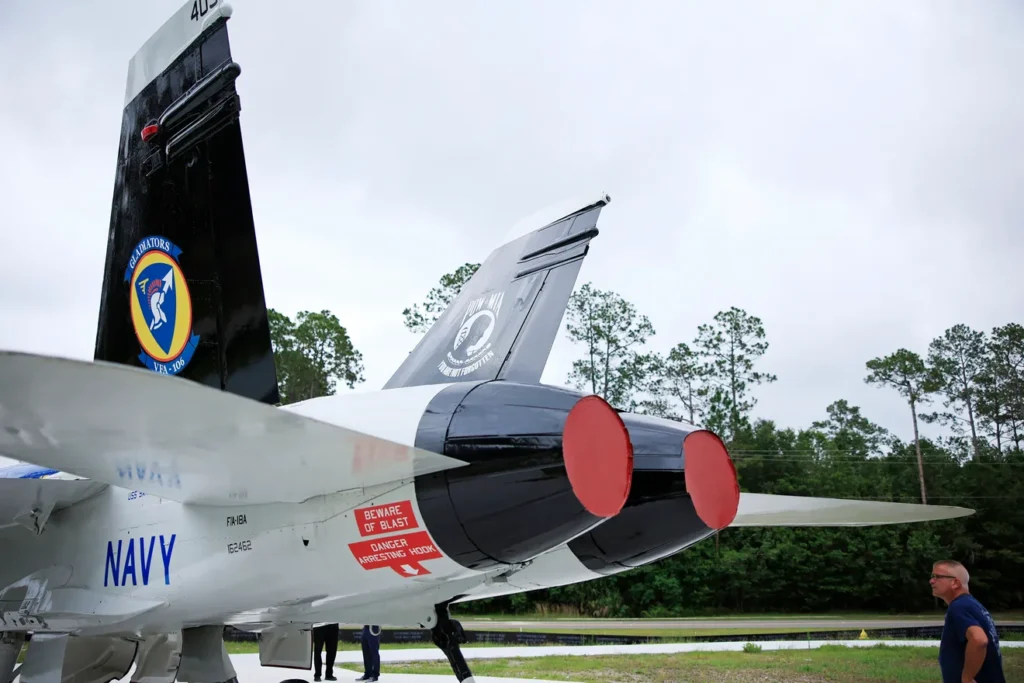
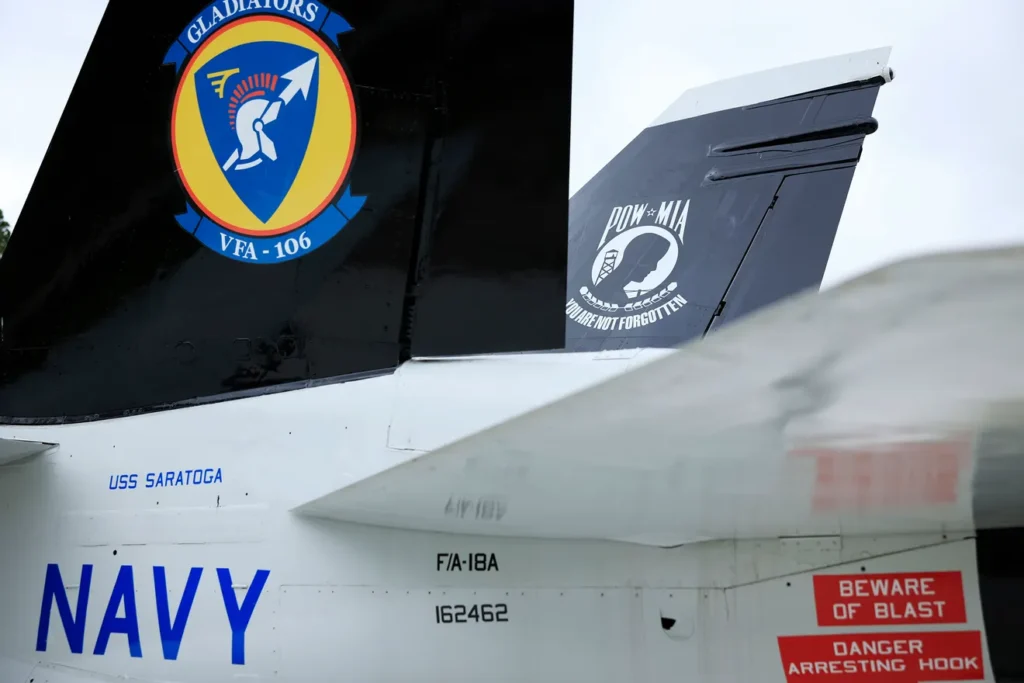
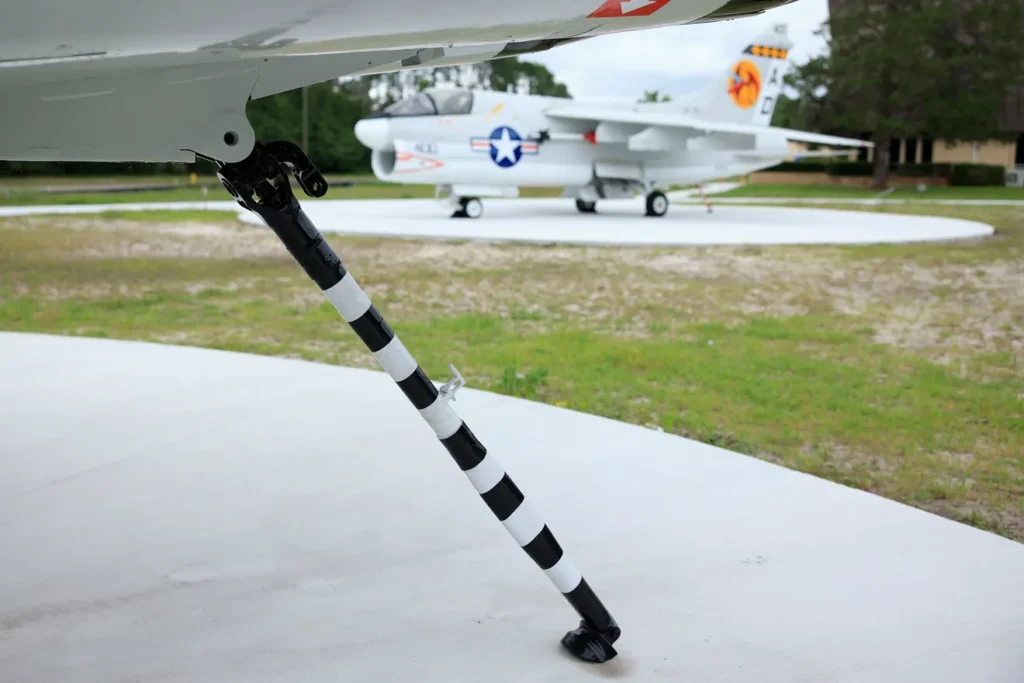
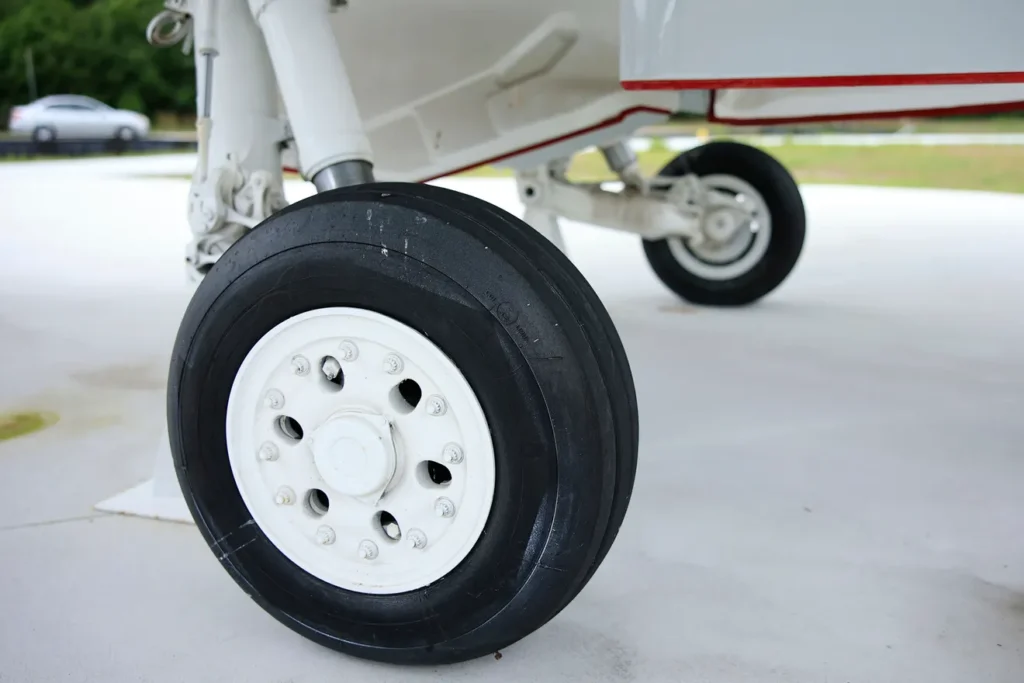
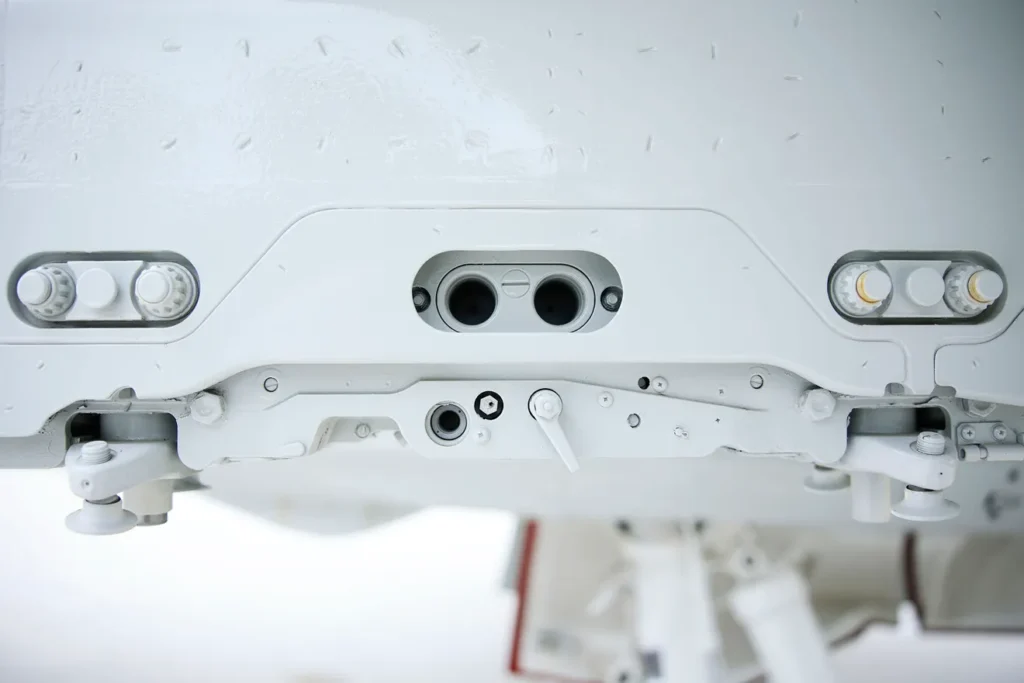
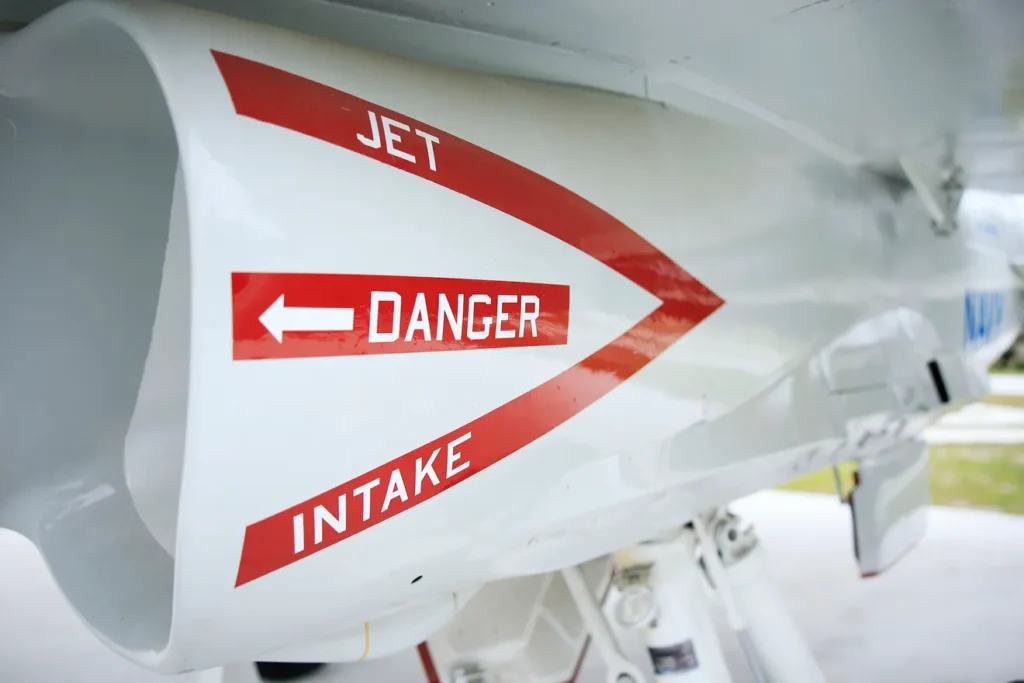
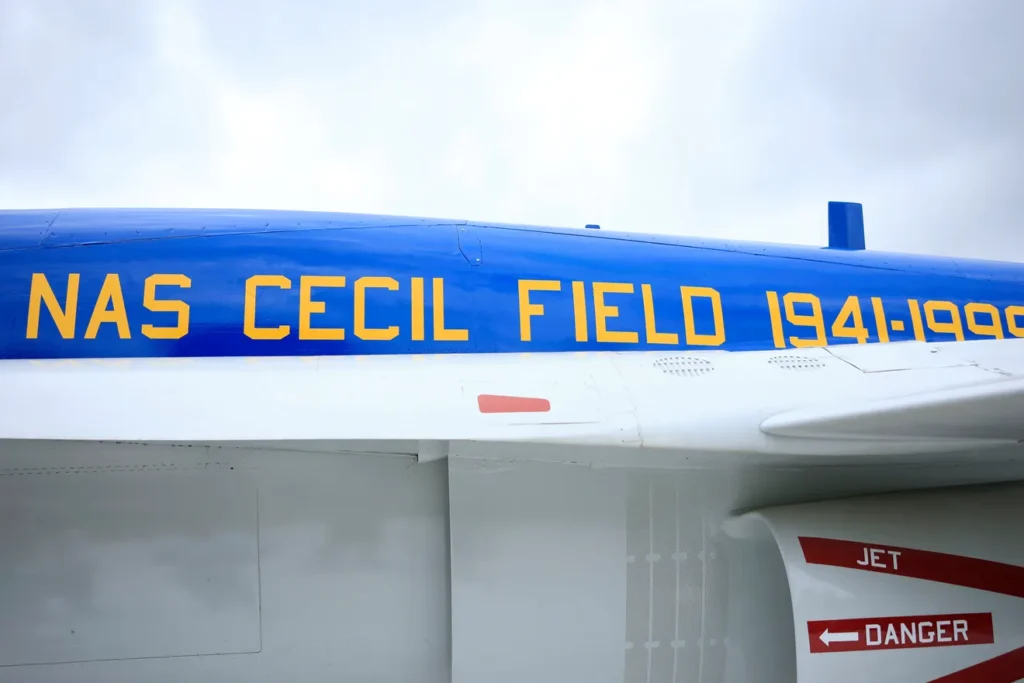
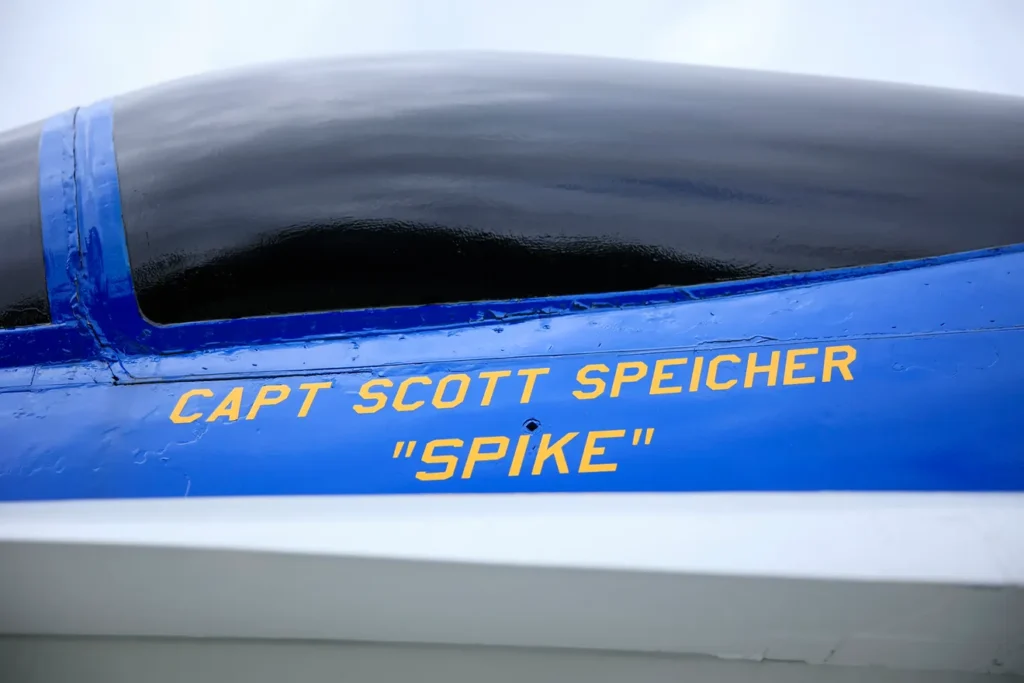
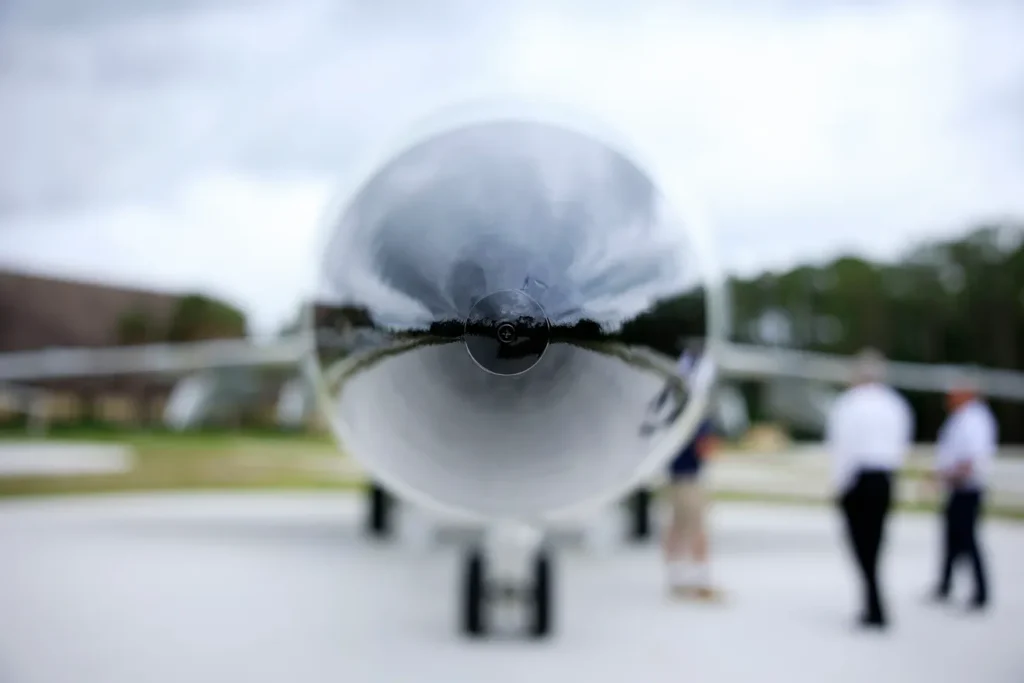
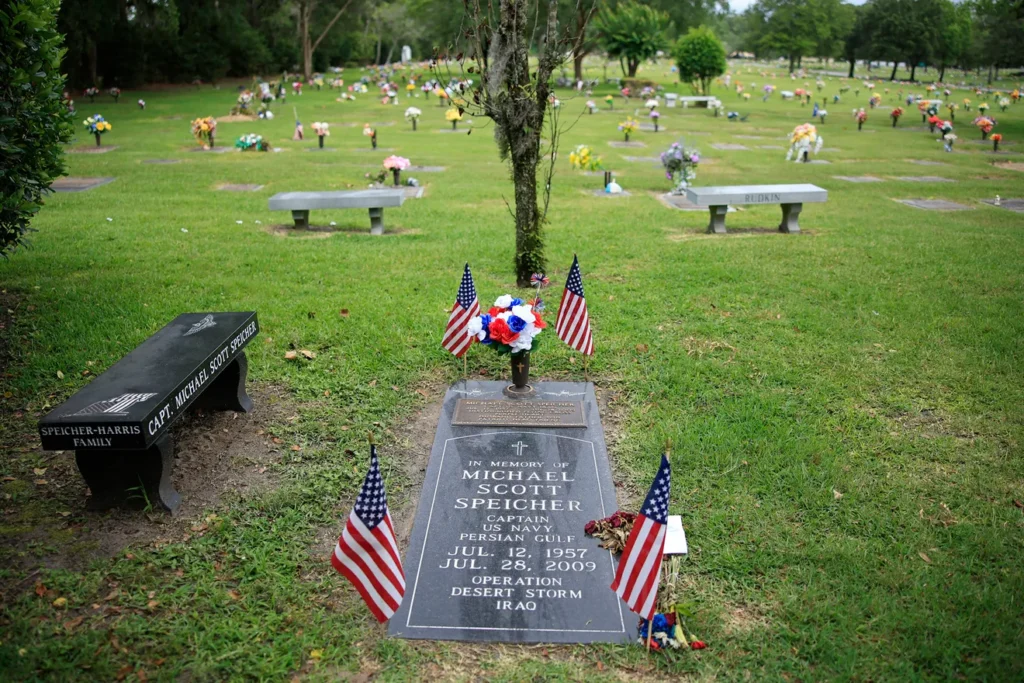
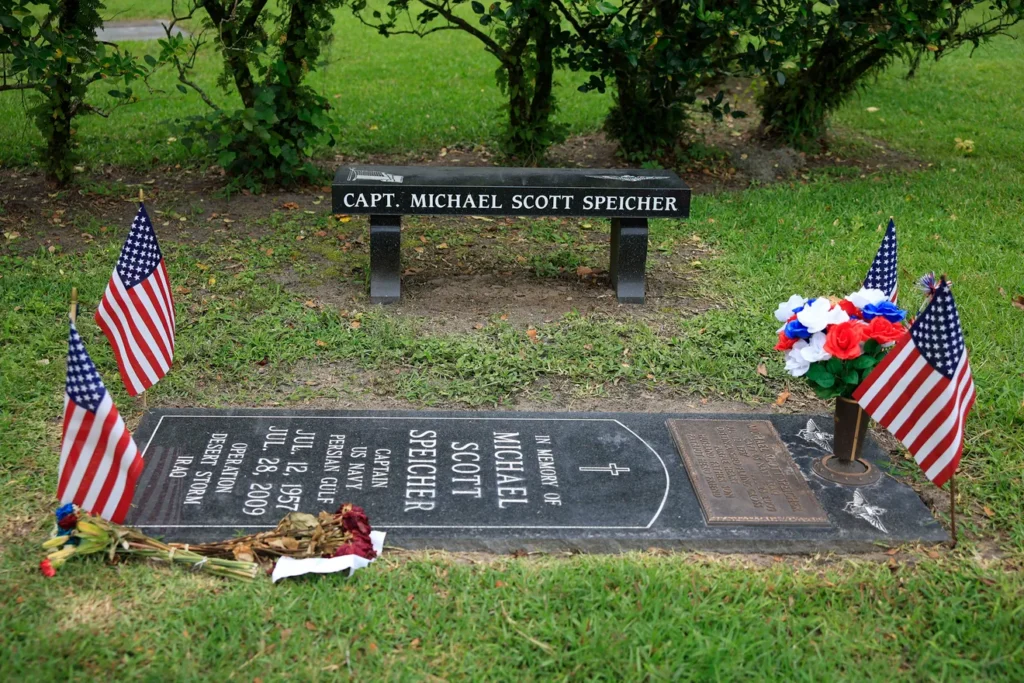
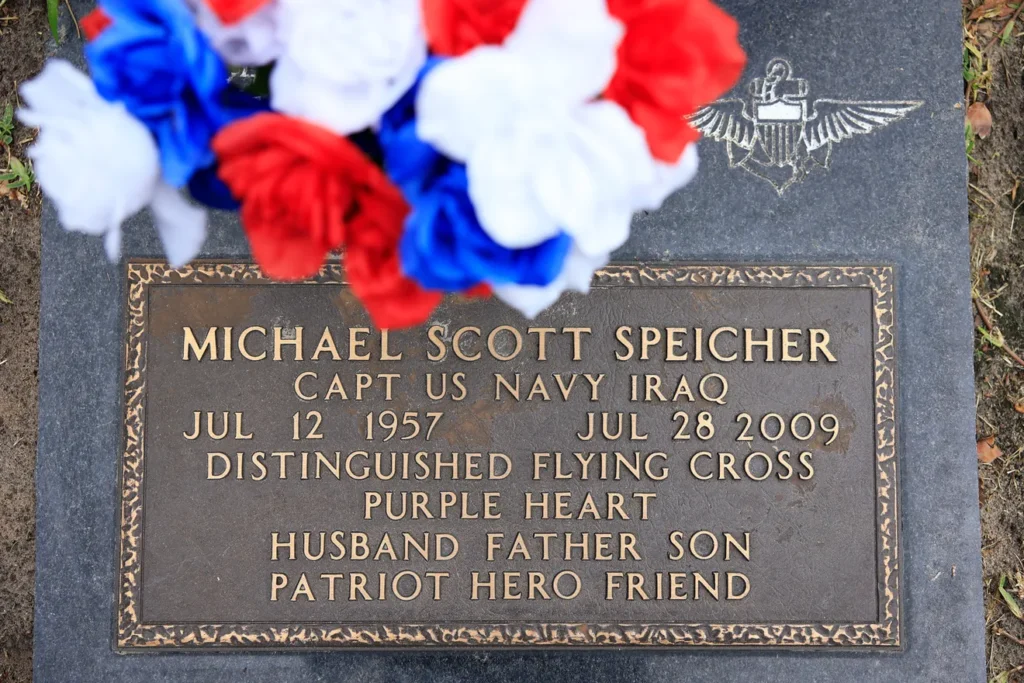
Photos by Corey Perrine/Florida Times-Union
Harris, who prodded a government investigation into Speicher’s fate and helped bring his remains home to Northeast Florida in 2009, is now married to his widow. He said the family was “tremendously honored” to see the plane restored and adorned with the Speicher name.
The VFA-106 insignia on the restored Hornet’s tail is particularly touching, he said. Speicher was part of Strike Fighter Squadron 106, also known as VFA-106, which was commissioned at Cecil Field in 1984, flying what was then the Navy’s newest tactical aircraft, the F/A-18.
The family sees that insignia and, instead of being reminded of his death, “they think of the time he was happiest of all,” his time in VFA-106, when his two children were born, Harris said. “It brings hope.”
Museum the first of its kind in the United States
About 45,000 U.S. service members were held as prisoners of war and about 80,000 service members are still listed as missing in action from World War II to the present, according to the nonprofit museum.
For a time, Speicher was listed as missing in action, then as a prisoner of war. In 2009, Iraqi civilians led U.S. Marines to a desert grave with remains later determined to be Speicher. They were interred at Jacksonville Memory Gardens.
An F/A-18 Hornet fighter jet dedicated to Navy Capt. Scott Speicher is shown with his cockpit labeled at the National POW/MIA Memorial & Museum. The Cecil Field-based pilot was shot down during the Gulf War.
The planned memorial and museum, to be built in phases, will be the first of its kind in the country dedicated to POWs and MIAs and their families. “The families need somewhere to go to honor their loved ones and learn about others,” Harris said.
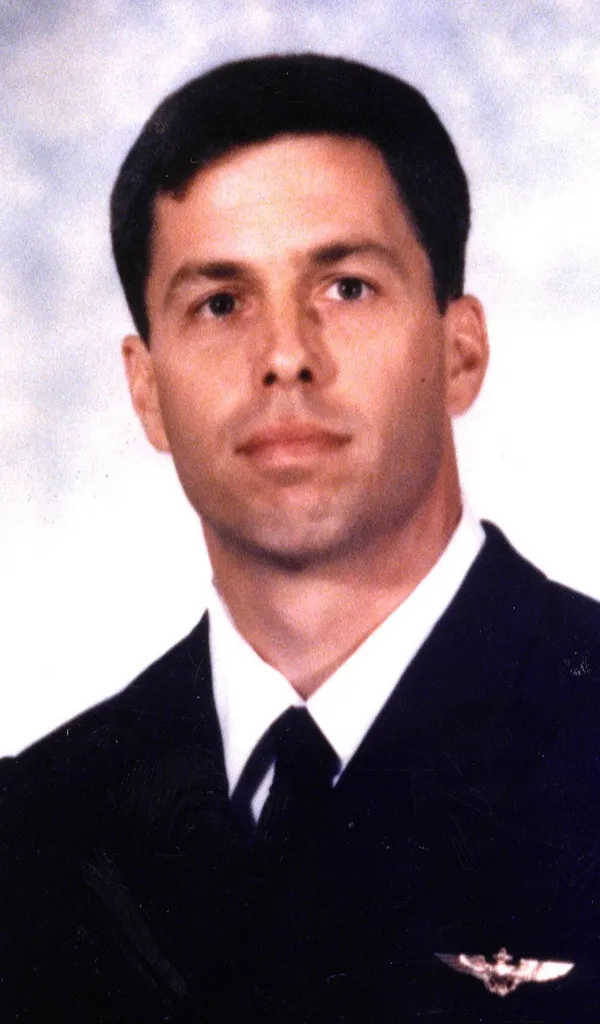
Capt. Scott “Spike” Speicher AP Photo/Florida-Times Union
The project evolved from the original POW/MIA Memorial just south of the Chapel of the High-Speed Pass that was dedicated to Cecil-based naval aviators during the Vietnam and Desert Shield/Storm eras.
On May 25, U.S. Rep. Aaron Bean of Fernandina Beach introduced bipartisan legislation to designate the POW/MIA Memorial & Museum as a “national landmark” and authorizing the use of the word “national” in its name. The museum will “honor, connect, inspire and educate the American people about members of the Armed Forces who were held as prisoners of war and those who became missing in action in our nation’s conflicts,” according to the legislation.
“America’s POW-MIAs should never be forgotten,” Bean said. “These patriots deserve a special place of honor because of their selfless dedication, unmatched valor and unsurpassed devotion to our nation’s values. This memorial will give Americans a unique opportunity to honor the immense sacrifice made by our POWs and serve as a powerful reminder of the service members whose fates are still unknown.”

An F/A-18 Hornet fighter jet dedicated to Navy Capt. Scott Speicher is shown with his cockpit labeled at the National
POW/MIA Memorial & Museum. The Cecil Field-based pilot was shot down during the Gulf War. Corey Perrine/Florida
Times-Union
Honoring POWs and MIAs: Planned National POW/MIA Memorial and Museum taking flight in Jacksonville after COVID-19 delay
‘Sanctuary’: Ground broken for National POW/MIA Memorial & Museum in Jacksonville
The first groundbreaking was in 2020, but construction was interrupted by the COVID-19 pandemic. Phase one resumed in 2021 with the renovation of the Chapel of the High-Speed Pass, which is now used as a military chapel for ceremonies, weddings, memorial services and retirements. Also completed is the Gold Star Memorial, which pays tribute to families whose loved ones made the ultimate sacrifice.
Next up was the restoration of the first two of the four planes to be on display in front of the chapel. The F/A-18 Hornet and the A-7 Corsair II are now in place, awaiting an S-3 Viking and A-4 Skyhawk to eventually join them. Also planned are site enhancements, including a brick walk fundraiser and a replica of the USS Saratoga.
Getting the first two planes restored and in place included some manpower and logistical nightmares, with several companies not fulfilling promises, Harris said. The planned site enhancements are still not completed. But he praised Million Air, Mankiewicz Coatings, Crane and Rigging, Boeing and Flightstar Aircraft Services for their contributions.
Overcoming obstacles, and ‘a new sense of moving forward’
The trials began when the A-7 arrived from Arkansas in September 2019. When found, it was in disrepair and the wings and tail had to be cut off for transportation.
“To say it was a project was a tremendous understatement. We needed … a lot of help,” Harris said. “First being a place to store our aircraft, as we began the process of putting her back together. We knew this was going to be an extremely difficult operation.”
Flightstar saved the day, despite being hit hard by the pandemic. The company provided rehab space and used the A-7 project to train staff in aircraft engineering, preparation and painting during their pandemic work lull.
Daniel “Dano” Mastrolia looks at the rear of an F/A-18 Hornet fighter jet he helped restore at the National POW/MIA Memorial & Museum at the former Cecil Field in Jacksonville.
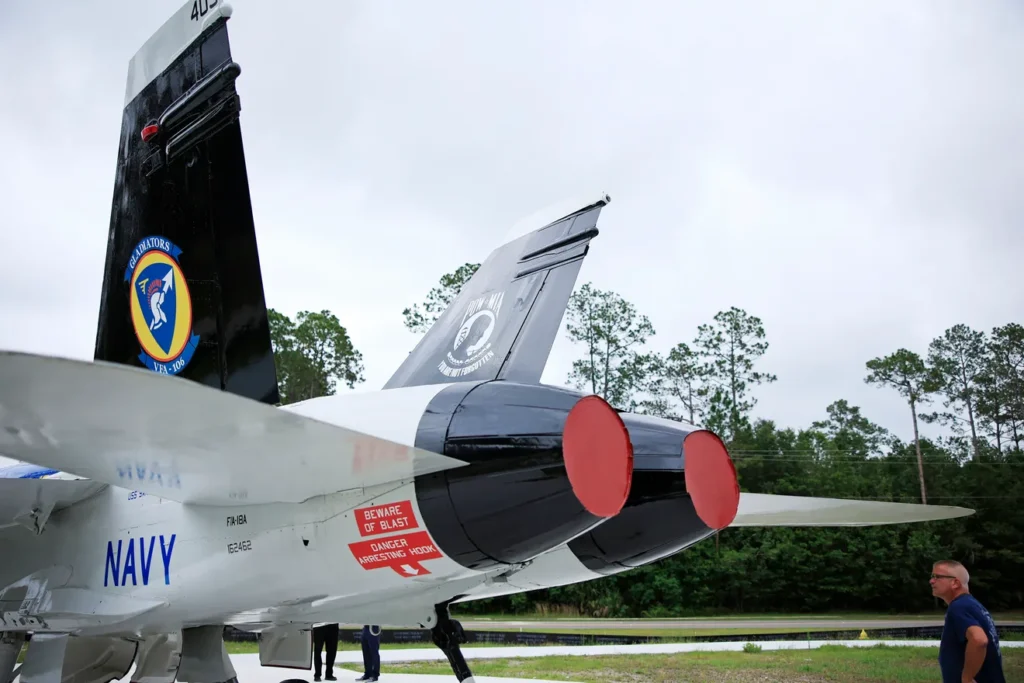
Daniel “Dano” Mastrolia looks at the rear of an F / A-18 Hornet fighter jet he helped restore at the National POW/MIA
Memorial & Museum at the former Cecil Field in Jacksonville. Corey Perrine/Florida Times-Union
The F/A 18 was once at the main gate of the base, but later moved to Jacksonville Aviation Authority where it was dedicated to Speicher. After it fell into disrepair, the JAA in 2021 agreed to let it be moved to the museum and restored, as long as it retained the Speicher name. “Our immense honor,” Harris said.
Flightstar had no space available, but Boeing provided a hangar.
“The Hornet was not an easy project. It had a lot of corrosion and a few missing parts. It took a few months to prep out,” Harris said.
The planes also had to be maneuvered into their final places by crane, over a gate, courtesy of Crane and Rigging.
A restored F/A 18 Hornet jet is held by a crane during its journey from a Boeing hangar to a display spot at the National POW/MIA Memorial & Museum at Jacksonville’s Cecil Commerce Center. The trip included being maneuvered over a gate.
“Everything had to work perfectly for success … We had numerous obstacles to avoid,” Harris said.
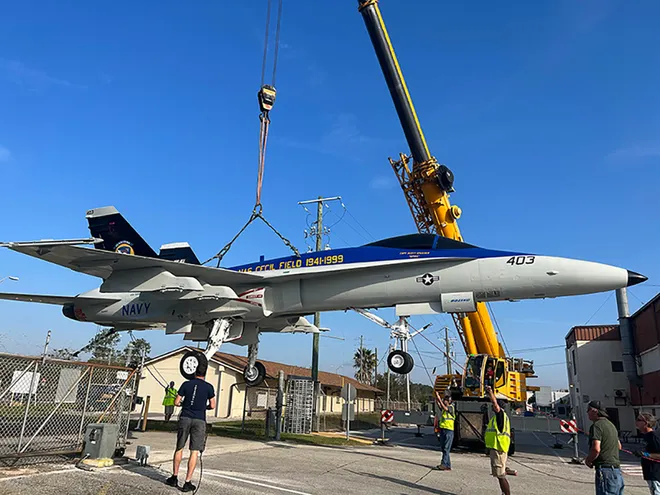
A restored F/A 18 Hornet jet is held by a crane during its journey from a Boeing hangar to a display spot at the National
POW/MIA Memorial & Museum at Jacksonville’s Cecil Commerce Center. The trip included being maneuvered over a gate.
Provided By National POW/MIA Memorial & Museum
Still to come, among other things, are a 160,000-square-foot museum and an MIA Hall. In the hall, the names of the 80,000 or so still missing in action will be shown on an interactive glass, “their names … etched in a gallery of light,” according to a preliminary rendering by Prosser, a Jacksonville planning and engineering firm.
Also, three rooms in the new museum will be used by the Defense POW/MIA Accounting Agency to show families and the public how they track Americans who went missing while serving in the military, Harris said.
An existing building on the 26-acre property is being prepared to function as a temporary museum with exhibits, videos, artifacts and memorabilia until the new, interactive one is built. The temporary space is expected to open by fall.
‘Be as dedicated … as we are’: Military museum backers face long road, big challenges
Even before anything was open and the A-7 was temporarily in an on-site parking lot, passersby still stopped to visit and ask questions. Some of them got tours of the temporary museum, to get an idea what will eventually be there, Harris said.
Word of mouth will accelerate if and when the Bean legislation is passed and once the temporary museum opens, he said. Those two events are expected to boost fundraising for the rest of the complex, like the restoration of the first two planes charged up organizers and volunteers.
“We now have a new sense of moving forward, and have provided two extraordinary reasons for others to stop and take notice,” Harris said.
[email protected] (904) 359-4109





